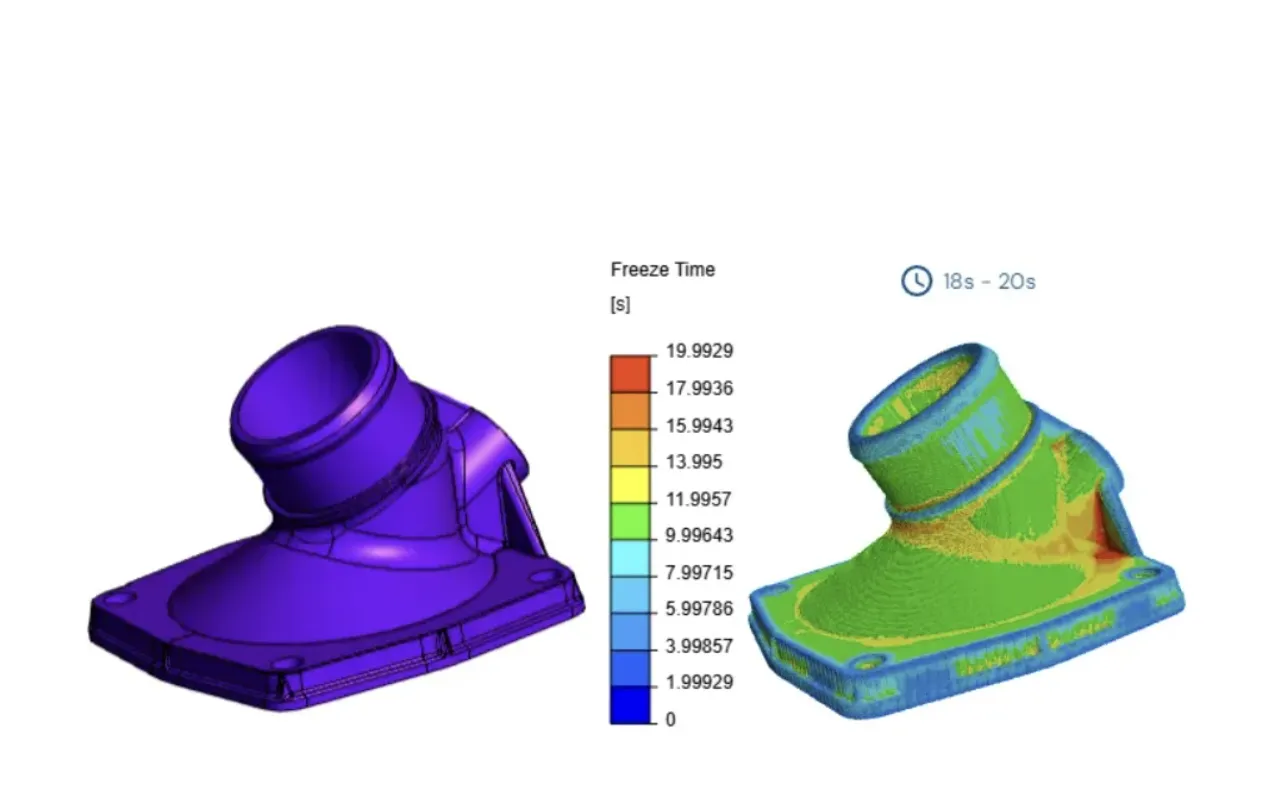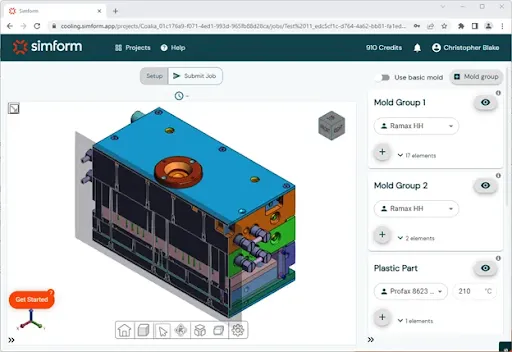by Chris Blake
The potential of injection molding with 3D printed molds has advanced by leaps and bounds in the last decade, and this innovative process now plays a vital role in plastic mold manufacturing. Clay Stephens has a front row seat to these trends as managing director at Synergy Molding Technologies, a leader in applying 3D printing technologies to the fabrication of tools and dies.
With locations in Michigan and Texas, SMT excels in 3D printed metal molds that can be printed in aluminum or steel for both prototype and production molding applications. According to Clay, the technology allows for up to 50% faster production than conventionally milled steel molds while using 80% less material, on average, for the same or less cost than with conventional manufacturing alone.
But SMT’s capabilities in 3D printing are an outgrowth of decades of experience in traditional mold manufacturing, which led to them working directly with manufacturers of 3D printers and automotive OEMs to pioneer 3D printing advancements. Today, its 3D design, consulting, printing and engineering services complement a wide range of custom mold design and manufacturing services for conventional CNC milled molds and hybrid tooling that combines 3D printing with CNC techniques.
That combination informs an important point of view about the role 3D printing technology can play in the industry. We recently connected with Clay to get his knowledgeable perspective on the benefits of making molds with 3D printing; why mold cooling simulation is such a critical part of designing high quality and cost-effective 3D printed molds; emerging advancements in mold cooling technology; and what factors are holding back innovation in the industry.
Why mold cooling simulation is a must for 3D printed tools
As Clay notes, one of the biggest opportunities in combining additive manufacturing with traditional tooling methods is the ability to engineer smarter cooling strategies directly into the mold geometry. Conventional molds often rely on straight drilled lines that work within machining constraints. But with 3D printing, it’s a simple matter to introduce conformal cooling channels that follow the contours of the part and drastically improve thermal regulation, which improves part quality while also reducing cycle times.

However, just because a channel can be printed doesn’t mean it should be. That’s where simulation enters the picture. Clay emphasizes that thermal simulations — like those performed in SimForm — are critical to determine where cooling will actually make a difference. Without simulation, it’s easy to waste time and money on over-engineered or poorly placed channels that won’t improve performance (and might even hurt it).
Strategic use of mold cooling simulation, especially when it’s early in the design process, acts to eliminate troublesome trial-and-error on the floor. It also helps to accelerate and justify the ROI of 3D printing and/or hybrid approaches to tooling. Simulation empowers mold makers to test ideas before committing to expensive builds, which ultimately reduces scrap and speeds up time-to-first-part.
Hybrid tooling: a passing trend or a necessity?
One mold manufacturing topic from the interview worth deeper discussion is the notion that certain mold shops aren’t actually choosing between additive and conventional — they’re integrating both. Hybrid tooling, where 3D printed inserts are combined with milled components, can offer the flexibility and speed of AM with the ruggedness and precision of CNC. In some cases, hybrid designs may make it easier to service, replace, or modify only the portions of the mold that benefit most from additive techniques.
However, as Clay points out, in many more cases hybrid tooling is something of a stepping stone that may not even be necessary. Modern additive processes such as those used by Synergy Molding Technologies can even create high-quality, well-finished plastic molds that usually require no further machining or processing after printing.
What’s holding back broader adoption in plastic molding manufacturing?
Despite its clear benefits, Clay notes that additive mold manufacturing still faces practical barriers as well as resistance from industry conventional wisdom. Many mold shops and plastic injection molding manufacturers are comfortable with legacy approaches and don’t yet have access to the design tools or simulation software needed to confidently implement 3D printed components.
There's also a widespread tendency to over-rely on intuition. Designers may "add cooling where they think it’s needed" without checking the thermal behavior through simulation. That results in wasted inserts, inefficient layouts, or even performance issues down the line. As Clay puts it, tools like SimForm help bridge this gap by providing real-time feedback that enhances — rather than replaces — engineering intuition.
Digital transformation and the next generation of tooling

Beyond individual projects, SMT’s work illustrates a larger shift toward digitally enabled manufacturing workflows. Simulation tools like SimForm and generative design platforms like Cognitive Design Systems are finally making it possible for shops to take a more proactive approach to mold development. Designers can now visualize thermal behavior early in the process, before the mold is even built, and can complete rapid design iterations without delay. Shops achieve notable benefits, like fewer surprises and less rework, as well as a tighter feedback loop between mold makers and their OEM or molder clients.
The future of mold manufacturing is likely to be defined by flexibility, data, and speed — all of which are accelerated when 3D printing is combined with smart simulation.
Watch the full interview with Clay Stephens to hear firsthand how SMT is applying 3D printing and simulation tools to deliver better molds, faster: